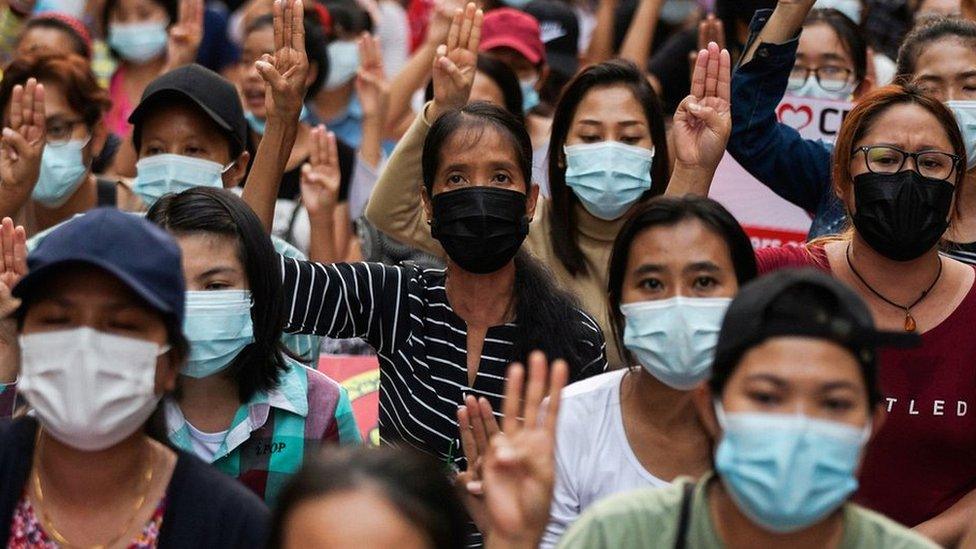Myanmar coup: YouTube removes channels run by army amid violence
- Published
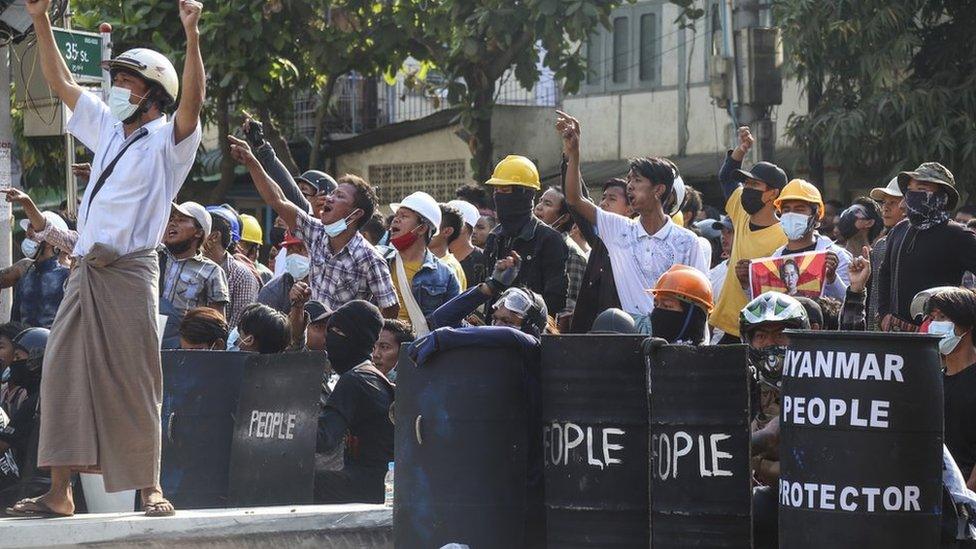
Demonstrators gathered on the street during an anti-coup protest in Mandalay on Friday
YouTube has removed five channels run by Myanmar's military amid ongoing violence following a coup last month.
The video-sharing platform said on Friday that it had removed the channels in line with its community guidelines.
Myanmar has been gripped by mass protests demanding an end to military rule and the release of detained elected leaders.
Another protester was shot dead by security forces on Friday, in Mandalay, taking the death toll to at least 55.
The channels taken down by YouTube include the state network, MRTV, (Myanmar Radio and Television) as well as the military-owned Myawaddy Media, MWD Variety and MWD Myanmar, the platform said.
"We have terminated a number of channels and removed several videos from YouTube in accordance with our community guidelines and applicable laws," a YouTube spokeswoman said.
The platform is owned by Alphabet, the parent company of Google.
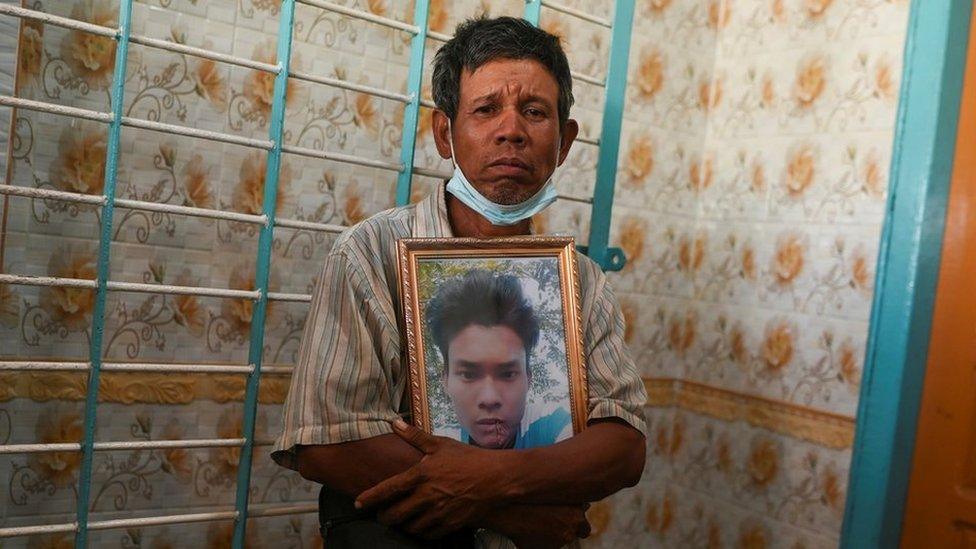
A man in Yangon holds a picture of one of the victims of the deadly crackdown on protesters
In a separate development on Friday, local officials in India said a group of Myanmar police officers had crossed the border seeking refuge after refusing to carry out orders.
And Myanmar's deputy envoy to the UN, Tin Maung Naing, refused to take over from the current ambassador, Kyaw Moe Tun, who was fired last week after speaking out against the military.
The single death recorded on Friday capped the bloodiest week in Myanmar since the military overthrew the country's democratic government on 1 February, with at least 38 people killed on Wednesday alone.
YouTube's decision to take down military channels comes over a week after Facebook banned all pages run by Myanmar's armed forces.
In December, shortly after Myanmar's general election, Google blocked 34 YouTube channels linked to the country.
A review by the Reuters news agency found many dozens of channels had promoted election misinformation while posing either as news outlets or political programmes.
Hundreds attend funeral for teenager killed in Myanmar protests
Crowds gathered in Mandalay on Thursday for the funeral of a 19-year-old woman who was shot dead during protests on Wednesday.
Kyal Sin, known as Angel, was pictures moments before she was shot in the head, wearing a T-shirt with the slogan "Everything will be OK".
Why are people protesting?
Myanmar's military seized power at the beginning of February after detaining the democratically elected leader Aung San Suu Kyi.
Days later, a civil disobedience movement began, with many people refusing to return to work and some taking to the streets to protest.
The movement gained momentum and before long hundreds of thousands of people were protesting. Myanmar's security forces responded with a violent crackdown - firing live rounds at unarmed protesters.
The military has not commented on the deaths, which now number at least 55.
More than 1,700 people have been detained since the coup, according to UN human rights chief Michelle Bachelet, including members of parliament, protesters, and at least 29 journalists.
Ms Bachelet said the figures could be much higher due to the large scale of the protests and difficulty in monitoring developments.

Myanmar in profile
Myanmar, also known as Burma, became independent from Britain in 1948. For much of its modern history it has been under military rule
Restrictions began loosening from 2010 onwards, leading to free elections in 2015 and the installation of a government led by veteran opposition leader Aung San Suu Kyi the following year
In 2017, Myanmar's army responded to attacks on police by Rohingya militants with a deadly crackdown, driving more than half a million Rohingya Muslims across the border into Bangladesh in what the UN later called a "textbook example of ethnic cleansing"
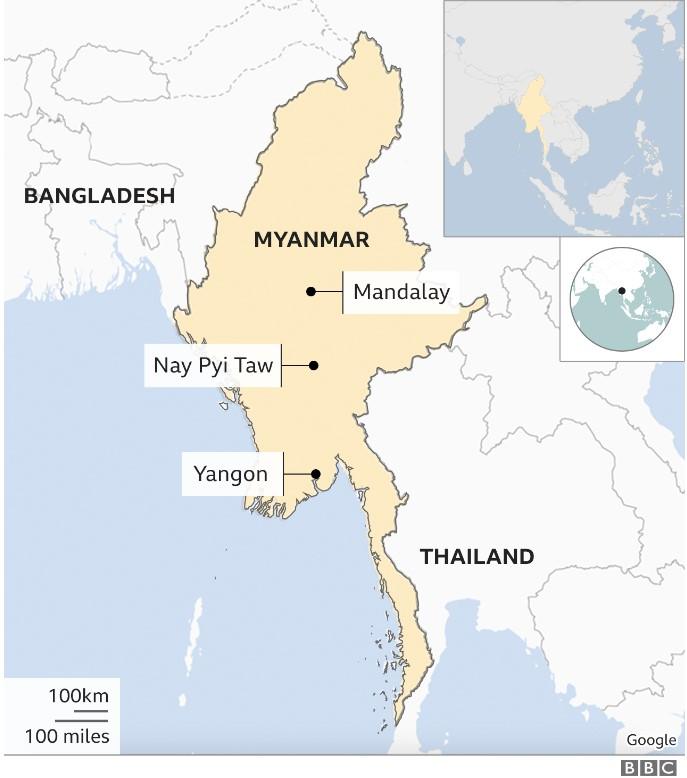

Related topics
- Published4 March 2021

- Published3 March 2021
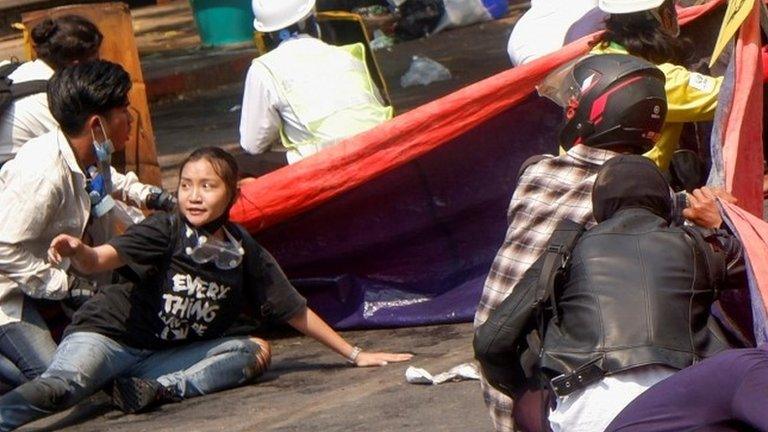
- Published1 March 2021
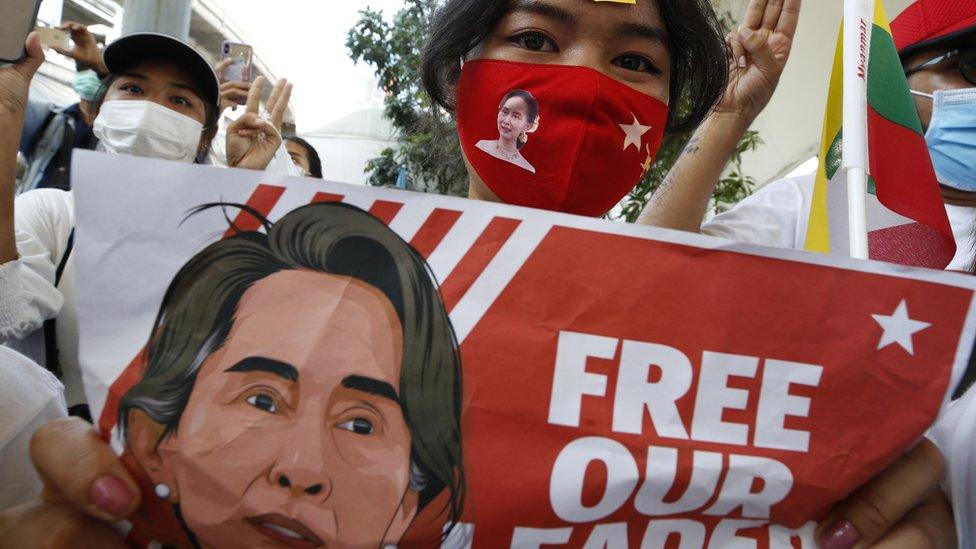
- Published25 July 2022
